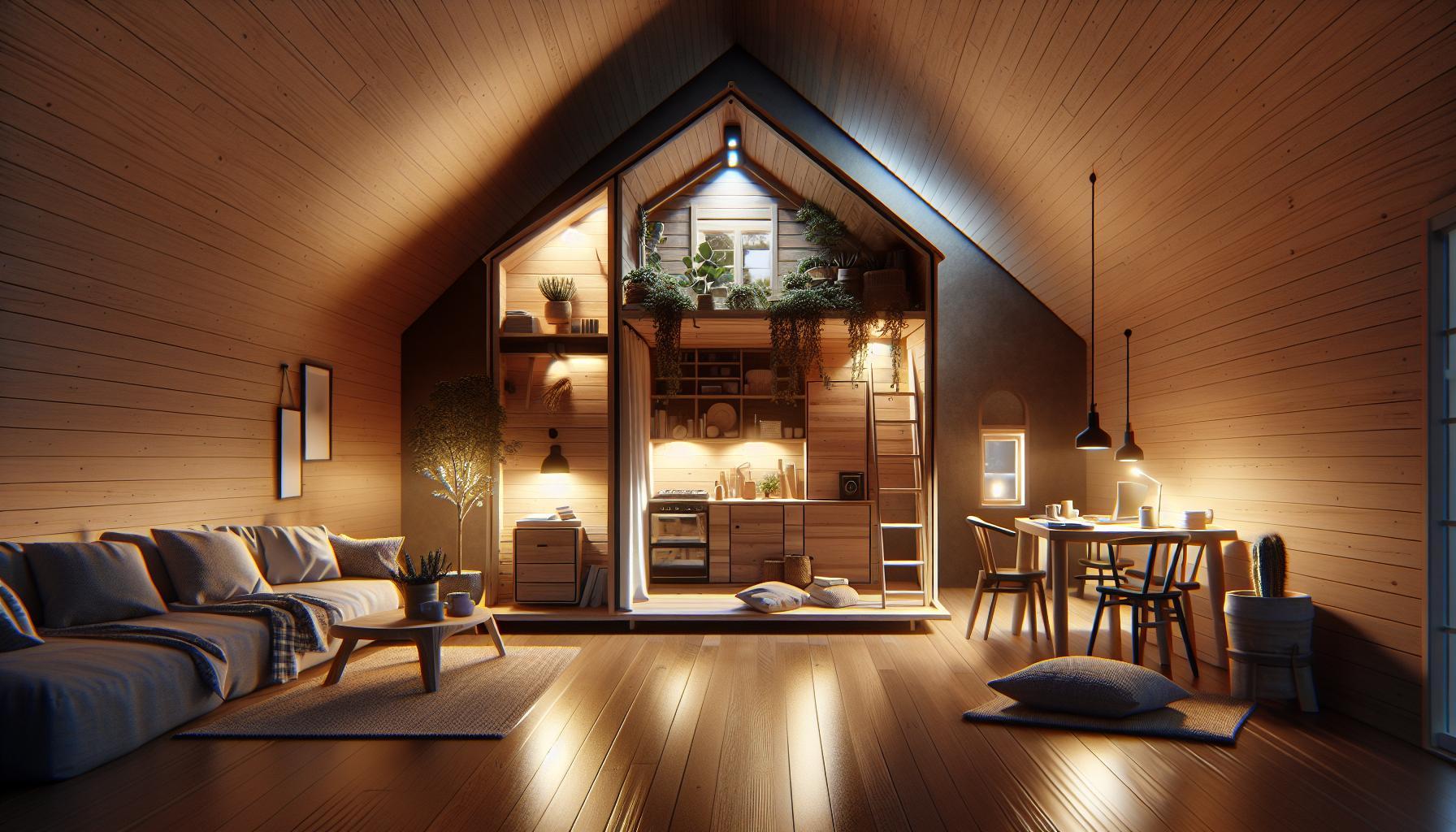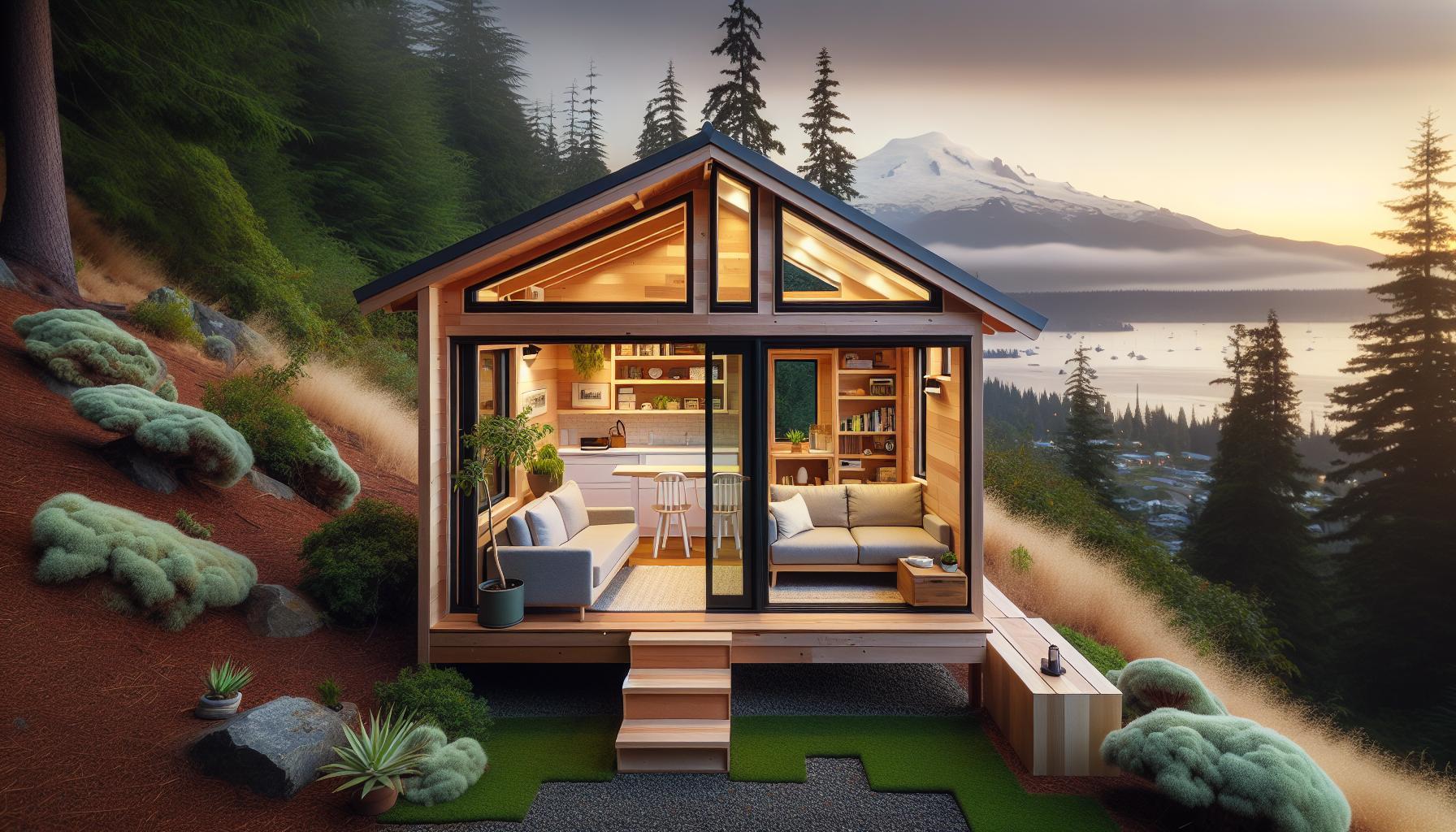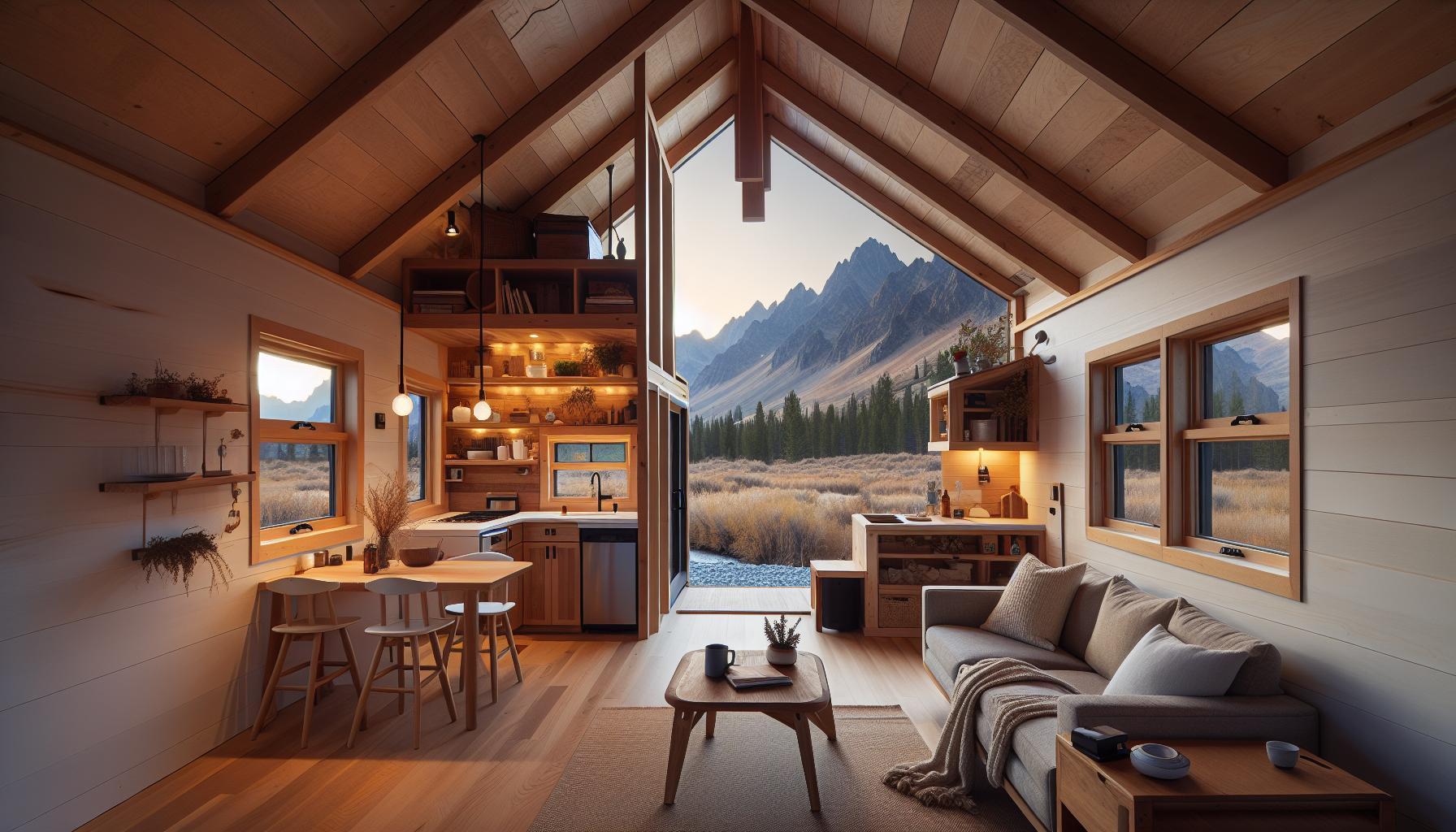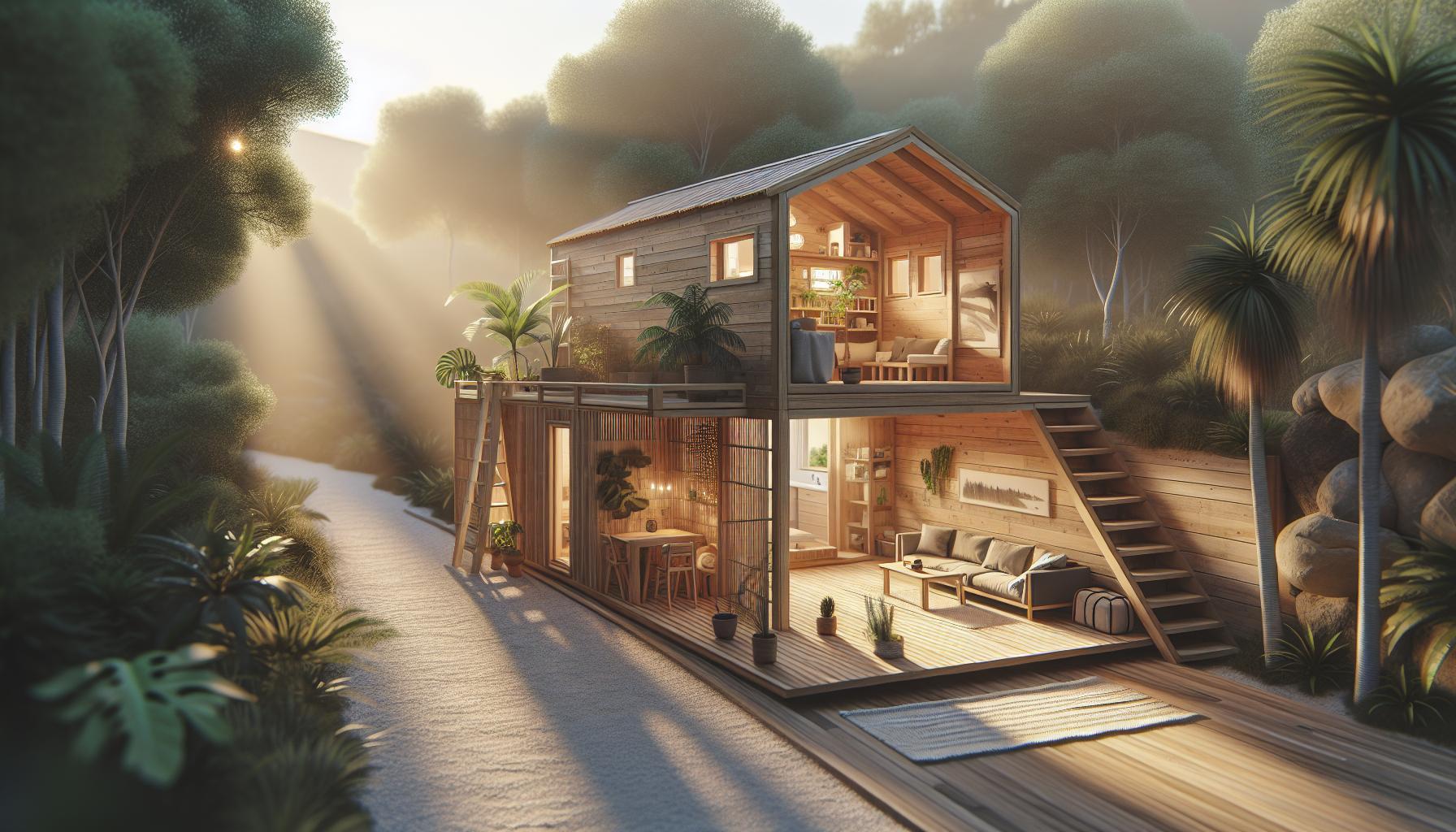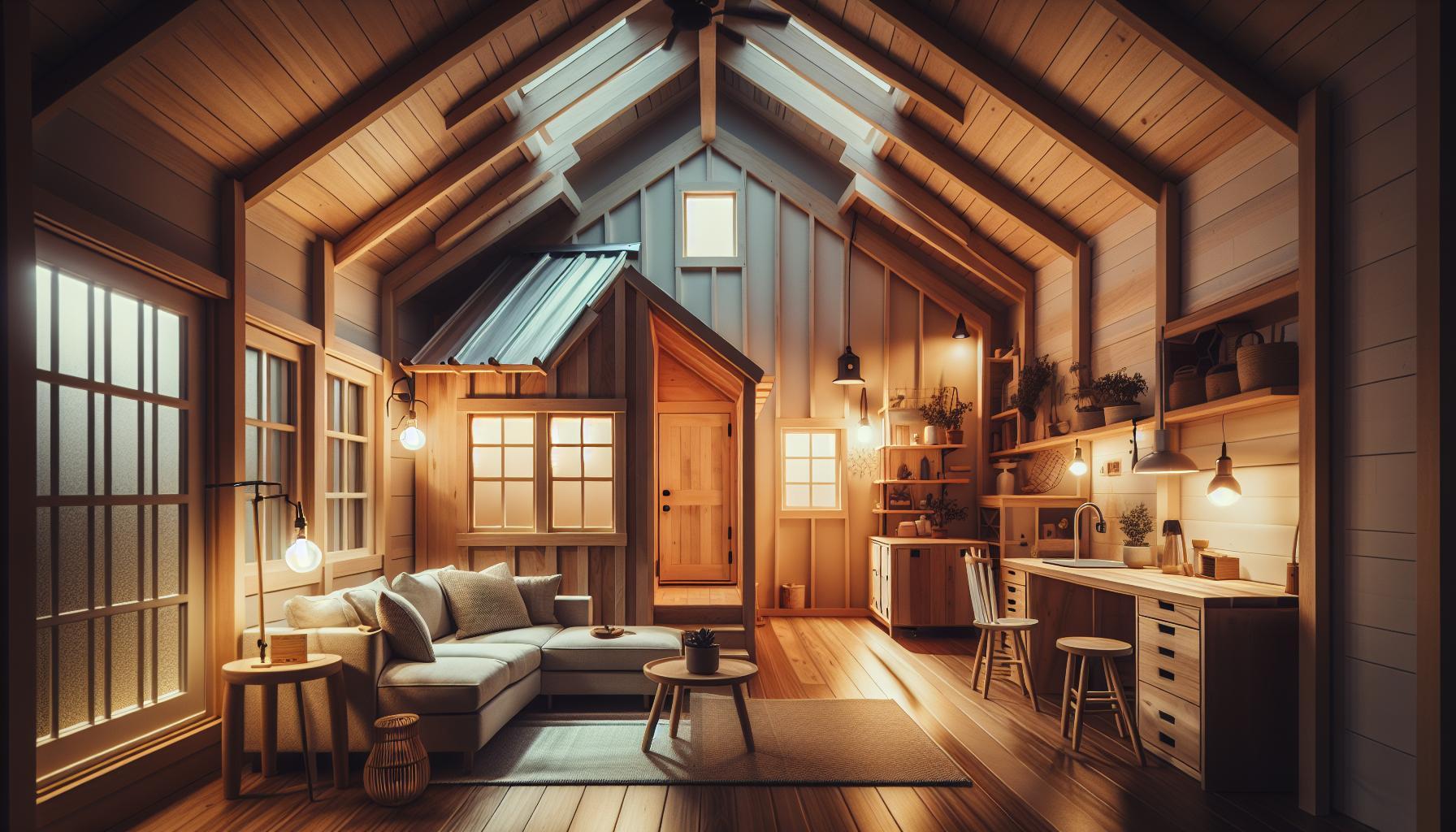Are you considering transforming unused space into a source of income? Renting out a tiny home on yoru property can be an innovative way to generate revenue while meeting the growing demand for affordable and unique vacation stays. Understanding local regulations and the potential earnings can help homeowners make informed decisions about this lucrative opportunity.
Understanding tiny Home regulations: What You Need to Know Before Renting
Renting out a tiny home on your property can be a lucrative opportunity, allowing you to capitalize on the growing popularity of minimalist living. However,before diving into this venture,comprehending the regulatory landscape is crucial.Tiny home regulations can be complex, frequently enough varying substantially based on local zoning laws, property type, and even neighborhood rules. This understanding not only safeguards your investment but also ensures compliance with the law.
Key Regulatory Considerations
Many municipalities differentiate between tiny homes on wheels (THOWs) and those built on foundations, each subject to distinct regulations.Tiny homes on wheels might be classified similarly to RVs, necessitating adherence to specific parking zones and residential areas that permit their use. On the other hand,tiny homes on permanent foundations frequently enough qualify as accessory dwelling units (ADUs),which can led to different permissions and restrictions based on local zoning ordinances [[1]].
It’s essential to engage with local government agencies and possibly a real estate lawyer familiar with tiny home laws in your area. They can provide clarity on whether your tiny home can be rented out as a short-term or long-term rental and what permits may be required for such a business model. Advocacy for tiny house rights is also growing, so connecting with local tiny home groups can provide insights and resources to aid your understanding of the regulations [[2]].
Steps to Compliance
To ensure compliance with zoning laws and regulations, consider the following steps:
- Consult Local Zoning Laws: Research your area’s specific regulations regarding rental properties, tiny homes, and ADUs.
- Obtain Necessary Permits: If required, apply for permits to use your tiny home as a rental.
- Review Licensing Requirements: Check if you need a business license or any other certifications to operate a rental.
- Prepare for Inspections: Be aware that your property may need to meet certain safety and building codes.
Engaging deeply with your local regulations not only prepares you for renting out a tiny home but also enhances your potential for a prosperous income-generating property.As tiny homes continue to rise in popularity, ensuring that you navigate the regulatory landscape correctly is your first step towards reaping the financial benefits of this innovative housing solution.
Evaluating Your Property: is It Suitable for a Tiny Home?
evaluating the suitability of your property for a tiny home is a critical step that extends beyond just measurement and zoning regulations. Tiny homes can provide not only a unique living space but also a lucrative rental income opportunity. If you’ve ever pondered the question, “Can I rent a tiny home on my property? Income potential revealed,” the answers lie within the characteristics of your land and local regulations.
assessing Property Characteristics
To begin with, you’ll need to consider several aspects of your property:
- Size: Tiny homes generally require a minimum of 400 square feet; however, you’ll also need sufficient outdoor space for utility access and possibly parking.
- Access: Ensure your property has practical access points for both residents and service vehicles.
- Utilities: Investigate what utilities are available. Tiny homes may need water, electricity, and sewer connections, or the choice options to supply these utilities.
- setbacks and Zoning: Local regulations dictate how far structures can be built from property lines. Familiarize yourself with these rules to avoid future complications.
Regulatory considerations
Understanding local zoning laws is essential for anyone considering renting out a tiny home. These laws will inform you whether or not you can legally place a tiny home on your property for rental purposes. Contact your local planning and zoning office to gather vital information such as:
| Regulation Aspect | Consideration |
|---|---|
| Allowed Property Types | Residential, Commercial, Agricultural |
| Minimum size Requirements | Varies by location |
| Rental Restrictions | Short-term vs. long-term rentals |
| Construction Standards | Building codes and safety regulations |
Environmental Considerations
Additionally, examine your property’s habitat. Is it prone to flooding, extreme temperatures, or wildfires? The local climate will dictate the materials and foundations suitable for your tiny home, and also any potential insurance costs. For instance, a property with frequent flooding might necessitate elevated structures, affecting initial expenditures.
With all these factors in mind, you will be able to determine not only if your property can house a tiny home but also how it can serve as a potential income generator. By asking critical questions and conducting thorough evaluations of your property,you set yourself on the right path to embracing the tiny home movement while capitalizing on its income potential.
Rental Income Potential: How Much Can You Earn from a Tiny Home?
With the rise of minimalist living and eco-pleasant lifestyles,tiny homes have surged in popularity,not just as residences but also as lucrative rental opportunities. Many homeowners are now exploring how much they can earn from renting a tiny home on their property, finding it an appealing way to supplement their income. This small investment can yield significant returns, making tiny homes an attractive asset in the rental market.
The potential earnings from a tiny home can vary significantly based on several factors, including location, amenities, and local demand. In urban areas where space is at a premium, tiny homes can frequently enough command higher rental prices. As a notable example, a tiny home in a city like San Francisco or New York might rent for $150 to $300 per night on platforms such as Airbnb, while rural or suburban locations might see nightly rates closer to $75 to $150. The following table showcases average rental prices across various locations in the U.S.:
| location | Average Nightly Rate |
|---|---|
| Urban Areas (e.g.,San Francisco) | $200 – $300 |
| Suburban Areas (e.g., Atlanta) | $100 – $175 |
| Rural areas (e.g., Midwest) | $75 – $125 |
In addition to nightly rates, the occupancy rate of your tiny home will influence overall rental income. Properties in high-demand areas can expect occupancy rates of 60-80%, especially during peak travel seasons. Thus, actively promoting your tiny home through social media and rental platforms can maximize its visibility and attract more guests. Consider offering unique experiences, such as outdoor adventures or cozy retreats, which can also enhance rental appeal.Furthermore,understanding local regulations and zoning laws is essential.Some areas may have restrictions on short-term rentals,affecting how much you can earn from your tiny home. It’s advisable to research and, if necessary, consult with local authorities to ensure you comply with all rules and maximize your rental income potential. Embracing these strategies can turn a tiny home into a critically important income-generating asset, affirming the question, “Can I Rent a Tiny Home on My Property? Income Potential Revealed!” with remarkable results.
pros and Cons of Renting Out a Tiny Home on Your Property
As the tiny home movement gains momentum, many property owners are considering the potential income benefits of renting out a tiny house on their premises.This lifestyle choice not only embraces minimalism but can also serve as a lucrative source of passive income. However, before diving into this entrepreneurial venture, it’s crucial to weigh the advantages and potential drawbacks.
Advantages of Renting Out a Tiny Home
Renting a tiny home can offer various benefits, particularly in today’s housing market, where affordability is a significant concern for many. Here are some compelling advantages:
- Additional Income Stream: Renting a tiny home on your property can generate a steady income, making it easier to cover mortgage or property taxes.
- High Demand: With the rise in short-term rentals, a well-located tiny home can attract a steady stream of renters, especially tourists or individuals seeking a unique experience.
- Lower Maintenance Costs: Tiny homes typically require less upkeep than customary houses,reducing your overall expenses.
- Environmental benefits: By renting a tiny home, you contribute to sustainable living practices, potentially appealing to eco-conscious tenants.
Challenges of Renting a Tiny Home
Despite the appealing benefits,there are also significant challenges to consider. Potential issues coudl arise that might affect profitability and your peace of mind as a landlord.
- Zoning and Legal Restrictions: Local regulations may prohibit or complicate renting out tiny homes. It’s essential to research your area’s zoning laws before proceeding.
- Initial Investment: The cost of setting up a tiny home, including necessary utilities and furnishings, can be substantial.
- Tenant Management: Finding reliable tenants and managing rentals can be time-consuming, especially if you’re also juggling other responsibilities.
- Market Fluctuations: The demand for rentals can fluctuate seasonally, impacting your income stability, particularly in tourist areas.
The decision to rent a tiny home on your property can be a rewarding venture, offering numerous possibilities for income generation while also posing specific challenges. By carefully evaluating the pros and cons, you can strategically position yourself for success in this growing segment of the rental market.
Tips for Setting Up a Tiny Home Rental: From Utilities to design
Setting up a tiny home rental can be a rewarding venture,providing both an immersive lifestyle experience for guests and a significant source of income.With the rise of the minimalist movement and eco-tourism,many are asking themselves,”Can I rent a tiny home on my property?” and discovering the lucrative potential that awaits. Turning your property into an inviting space requires careful attention to both utilities and design elements that not only enhance the functionality but also charm your guests.
Utilities Setup
The first step to a successful tiny home rental is ensuring that all utilities are efficiently arranged.This includes providing reliable access to electricity, water, and sewage systems. Adopting energy-efficient appliances can significantly reduce operational costs while appealing to environmentally-conscious travelers. Additionally,consider installing solar panels as they not only decrease electricity expenses but also attract guests looking for sustainable options. Here are key utility tips:
- Electricity: Use LED lighting and Energy Star appliances to minimize usage.
- Water: Install low-flow fixtures and rainwater harvesting systems.
- Sewage: Explore options like composting toilets, which are eco-friendly and require less maintenance.
Thoughtful Design Choices
Design plays a crucial role in the appeal of your rental. since space is limited,maximizing functionality while maintaining aesthetic appeal is essential. Incorporate multi-functional furniture such as foldable tables, wall beds, or storage ottomans, which provide versatility without cluttering the space. Here are some strategies to create a memorable environment:
- Natural Light: Large windows or skylights can create an illusion of more space and invite the outdoors in.
- Color Palette: Use light and neutral colors to make the interior feel larger and more airy.
- Outdoor Space: Create a cozy external area with seating, plants, and lighting to enhance the overall experience.
By taking these factors into consideration, you can not only answer the question, “Can I rent a tiny home on my property?” with confidence but also increase its attractiveness to potential renters. Prioritizing both functional utilities and engaging design elements will ensure a pleasant stay for guests and,in turn,a prosperous rental income.
Navigating Zoning Laws: Finding Legal Ways to Rent Your tiny home
Navigating the complex world of zoning laws can be a daunting task, especially for tiny home enthusiasts looking to generate income by renting out their residences. Understanding the intricacies of local ordinances is essential to ensure you are complying with the law while making the most of your investment. Many areas have specific regulations governing the use of properties, which can significantly affect your plans to rent a tiny home legally.
To start, it’s crucial to investigate your local zoning laws. Zoning codes dictate how residential and commercial spaces can be utilized, and they can differ greatly from one municipality to another. this means that before setting up a rental operation, you need to find out if your area allows for short-term or long-term rentals of tiny homes. You might want to consider reaching out to the local zoning office or reviewing the official municipal zoning ordinances,as they will provide pertinent information on what is permissible on your property [[1]].One practical step in navigating these laws is to create a checklist for compliance:
- Check Zoning Designation: determine the zoning designation of your property and what land uses it permits.
- Review Occupancy Regulations: Understand the occupancy limits and requirements for renting out your tiny home.
- Obtain Necessary Permits: Investigate if you need any special permits to operate a rental.
- Stay Updated on Local Amendments: Zoning laws can change; ensure you stay informed about any new regulations that could impact your rental.
In places like New Jersey,for example,municipalities have the authority to implement their zoning laws,which can make for diverse regulations across different towns [[3]]. In this context, knowing your local laws not only helps you avoid potential fines but also positions you to operate your rental business within the legal framework, thus maximizing your profit potential without unnecessary risks.
As a final note, consider consulting with a land use attorney if navigating zoning laws feels overwhelming. They can provide tailored advice and help you understand how to legally rent your tiny home while maximizing your income potential. Engaging with professionals can save you time and ensure compliance as you embark on your rental journey.
Creating a Memorable Guest Experience in Your Tiny Home
Creating a memorable experience for guests in your tiny home can significantly enhance their stay and lead to glowing reviews, repeat bookings, and a steady stream of income. Tiny home rentals are becoming increasingly popular, but the unique charm of your space, combined with thoughtful touches, can set you apart from the rest. Here’s how to elevate your guest experience in ways that resonate long after check-out.
Thoughtful Design and Amenities
Every detail in a tiny home counts, from the layout to the furnishings. Emphasize the comfort and utility of your space by incorporating:
- Cozy Bedding: Invest in high-quality linens, pillows, and comforters to create a restful environment.
- multi-functional Furniture: Choose pieces that serve dual purposes, maximizing space without sacrificing comfort.
- personal Touches: Consider adding artwork, plants, or local crafts that reflect your personality and the area’s charm.
- Technology: Equip your tiny home with reliable Wi-Fi, smart speakers, and charging stations to cater to modern travelers.
These elements not only enhance the ambiance but also provide the amenities that guests have come to expect.
local Experiences and Personalization
A key aspect of a memorable stay is how well you can connect with your guests and provide them with local insights. Consider offering a personalized welcome package that includes:
| Welcome Package Item | Description |
|---|---|
| Local Treats | Include snacks or beverages from nearby artisan producers. |
| Guidebook | A curated list of your favorite local attractions, dining spots, and hidden gems. |
| Event Flyers | Information on any upcoming local events or markets during their stay. |
By providing local insights and activities,you’ll not only help your guests feel more connected to the area but also encourage longer stays and additional bookings.
Excellent Communication and Hospitality
Creating an inviting atmosphere starts well before your guests arrive. From the moment they inquire about renting your tiny home,excellent communication is essential. Ensure you:
- Respond Promptly: Address inquiries and booking requests quickly to show you value their interest.
- Set Clear Expectations: Provide detailed information about the space, check-in/out times, and policies to minimize any misunderstandings.
- check-In: Send a friendly message after arrival to ensure everything meets their expectations and to offer assistance.
Building a rapport with your guests will make them feel valued and encourage them to share their positive experiences, effectively driving the income potential revealed in discussions about the viability of renting a tiny home on your property. By prioritizing these aspects,you can create an inviting atmosphere that encourages repeat visits and word-of-mouth referrals—key drivers in the thriving market of tiny home rentals.
Marketing Your Tiny Home Rental: Attracting the Right Guests
Renting out a tiny home can be a lucrative endeavor,particularly as the trend towards minimalist living continues to rise. Many potential guests are drawn to the unique experience of staying in a tiny home, which offers an opportunity to embrace simplicity and eco-friendliness while still enjoying a comfortable getaway. To make your tiny home rental stand out and attract the right guests, an effective marketing strategy is crucial.
Understanding Your Target Audience
Knowing who your ideal guests are is foundational to successful marketing. Consider the demographics that are typically drawn to tiny homes. Families seeking affordable vacation options, couples looking for a romantic getaway, or even individuals interested in the minimalist lifestyle can all be key audiences. Tailoring your marketing messages to highlight features that resonate with these groups can enhance your appeal.Such as, if your tiny home is pet-friendly, emphasizing this in your listing can attract travelers with pets.
Leveraging Online Platforms
Utilizing popular platforms is essential for maximizing visibility. Websites like Airbnb, Glamping Hub, and Tiny House Listings provide excellent exposure since they already cater to guests interested in unique accommodations. To optimize your listing, ensure you include high-quality photographs that showcase the charm and amenities of your tiny home. Detailed descriptions that highlight nearby attractions, activities, and the experience of staying in a tiny home can further entice potential guests.
Key Elements for Your Online Listing:
- High-quality Images: Capture the interior and exterior from various angles.
- Descriptive Titles: use engaging and vivid language to draw buyers in.
- Highlight unique Features: if your tiny home has a deck with a view, a hot tub, or is located near unique attractions, make sure these features are front and center.
- Clear Pricing Structure: Be clear about costs, including cleaning fees or deposits, to build trust.
Utilizing Social Media and Local SEO
In addition to listing sites, harnessing the power of social media can significantly broaden your reach. Platforms like Instagram and Facebook are ideal for sharing visual content that promotes your tiny home experience. Engaging with followers by sharing tips on minimalist living or posting about local events can attract more attention to your rental. Moreover, implementing local SEO tactics—like using keywords related to your area (e.g.,“tiny home in Florida”)—can enhance your listing’s visibility in search results.
Example of a Local SEO Strategy:
| SEO Tactic | description |
|---|---|
| Keyword Optimization | Use specific keywords related to your location and rental type in your listing and on your website. |
| Google My Business | Set up a Google My Business account to improve local search visibility. |
| Local Listings | Get listed in local tourism websites and directories. |
With thoughtful marketing strategies in place, you can effectively position your tiny home rental to attract the right guests. By understanding your target audience and leveraging online platforms and social media, you’ll maximize your rental’s potential.As the trend of tiny home vacations continues to grow, ensuring your offering stands out will bring not only guests but also steady income potential from your property.
Frequently asked questions
Can I Rent a Tiny Home on My Property? Income Potential Revealed?
Yes, you can rent a tiny home on your property, but it depends on your local regulations. it’s essential to check zoning laws and any homeowner’s association rules that may apply. This rental arrangement can provide a significant income stream if managed properly.
Many property owners find that renting out a tiny home can yield a high return on investment,especially in desirable areas. However, make sure to comply with local laws regarding short-term rentals to avoid potential fines or legal issues.
for more details on legal aspects, visit our guide on tiny home regulations.
What are the legal requirements for renting a tiny home?
the legal requirements for renting a tiny home vary by location. Common issues include zoning laws, permits, and rental licenses.Always consult your local government or a real estate lawyer to understand the specific requirements in your area.
These legal aspects can dictate whether tiny homes can be used as rental properties at all. Some jurisdictions may require additional inspections or safety checks. Know your rights and responsibilities to avoid issues down the road.
How much can I earn by renting a tiny home?
renting a tiny home can earn you anywhere from $30 to $150 per night, depending on various factors. Location, amenities, and the rental market all play a role in setting a price.This income can be quite lucrative if your tiny home is marketed effectively.
For example, tiny homes in tourist areas may command higher rates, especially during peak season. Additionally, offering unique experiences, such as eco-friendly amenities or scenic views, can attract more guests, enhancing earning potential.
Can I rent out my tiny home long-term rather of short-term?
Yes, you can rent out your tiny home long-term, but check local regulations first. Long-term rentals may simplify management compared to short-term rentals and provide steady income. Though, be aware of lease agreements and tenant rights.
Many tiny home owners find that long-term rentals lead to less wear and tear than frequent guest turnover. Additionally,working with tenants can create a reliable income,allowing you to focus on other priorities or investment opportunities.
Why should I consider renting a tiny home on my property?
Renting a tiny home on your property can significantly increase your income potential. Besides financial benefits, it promotes sustainable living and contributes to the growing tiny house movement.This option allows you to make the most of unused space.
Furthermore, creating a tiny home rental can foster community and bring together like-minded individuals interested in minimalist living. Offering a unique accommodation option can enhance local tourism and provide an opportunity to share your passion for tiny houses.
how do I find tenants for my tiny home rental?
Finding tenants for your tiny home rental can involve various strategies. Online platforms like Airbnb or Vrbo are popular for short-term rentals, while real estate listing sites work well for long-term tenants. Use social media and local community boards to spread the word too.
In addition, creating an appealing listing with quality photos and detailed descriptions can attract more interest. Highlighting unique features and nearby attractions can enhance the appeal, ensuring your tiny home remains booked.
What are the benefits of renting a tiny home?
Renting a tiny home offers multiple benefits, including income generation and promoting a minimalist lifestyle. It allows you to utilize existing space efficiently, while also attracting environmentally conscious guests. A tiny home can also be a unique accommodation, standing out in a crowded rental market.
renting tiny homes can create a sense of community as it promotes shared values and experiences. Additionally, it can help offset mortgage payments or property taxes, making it a smart financial decision.
To Wrap It Up
As we conclude our exploration of renting a tiny home on your property, we hope you’ve gained valuable insights into the income potential and considerations involved in this exciting venture. Embracing the minimalist lifestyle not only opens doors to financial opportunities but also offers a chance to connect more deeply with your surroundings and community.
Remember, understanding local zoning laws and regulations is crucial before diving into this endeavor. Each area has its specific guidelines that can affect your plans—so do your research and, if necessary, consult local authorities to ensure compliance.
Additionally,consider the practical aspects of hosting renters,such as management,maintenance,and the type of rental agreements that suit your needs. Balancing the idealistic visions of tiny living with these everyday realities is key to creating a rewarding experience for both you and your guests.
We encourage you to take the next steps in your tiny home journey with confidence. Whether you’re looking to generate income or simply embrace a more simplified life, the possibilities are as vast as your inventiveness. Explore further, dive into local resources, and connect with fellow tiny home enthusiasts.The minimalist movement is more than a trend—it’s a lifestyle choice that can lead to fulfilling and enriching experiences. Happy tiny living!

